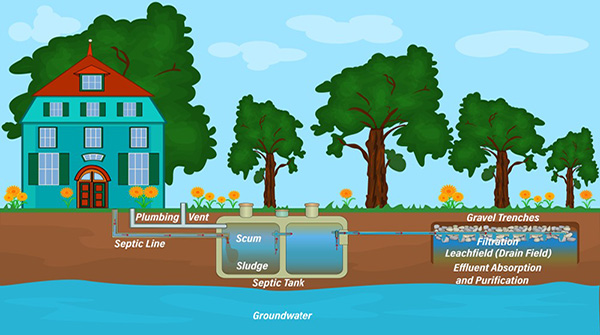Onsite Wastewater Treatment
An estimated 25 percent of homes in Missouri rely on an onsite wastewater treatment system (OWTS) in areas where public sewers are not available. Onsite systems treat wastewater and disperse it on the property where it is generated. When functioning properly, onsite systems prevent human contact with sewage, and prevent contamination of surface and groundwater. Factors that affect the proper functioning of onsite systems include the site and soil conditions, design, installation, operation, and maintenance.
The Missouri Department of Health and Senior Services (DHSS) has set minimum state standards for OWTS. These standards cover new systems and major changes to existing systems. Some examples of major changes are replacing a sewage tank, and replacing or expanding an absorption field. These standards became effective in January 1996.
Generally, a permit must be obtained before starting construction or repair work. However, certain residential properties may be exempt from state permitting requirements. When authority is based on a local ordinance, regulation can be more restrictive than the state standard; check with your local authority. In most counties, the local health department issues OWTS construction permits. In the other counties the authority is another agency, such as a sewer district, building department, or planning and zoning department.
Public health and the environment are protected when new OWTSs are constructed, and failing systems are repaired or replaced, using criteria equal to or better than Missouri's Minimum Construction Standards. Homeowner understanding of the need for regular maintenance and proper operation of their OWTS is important for long-term system performance and public health protection.
Any individual performing a major modification, repair, or installing a new OWTS must be registered with DHSS. These OWTS professional are provided an ID card which can be requested for verification after completing the required trainings.









